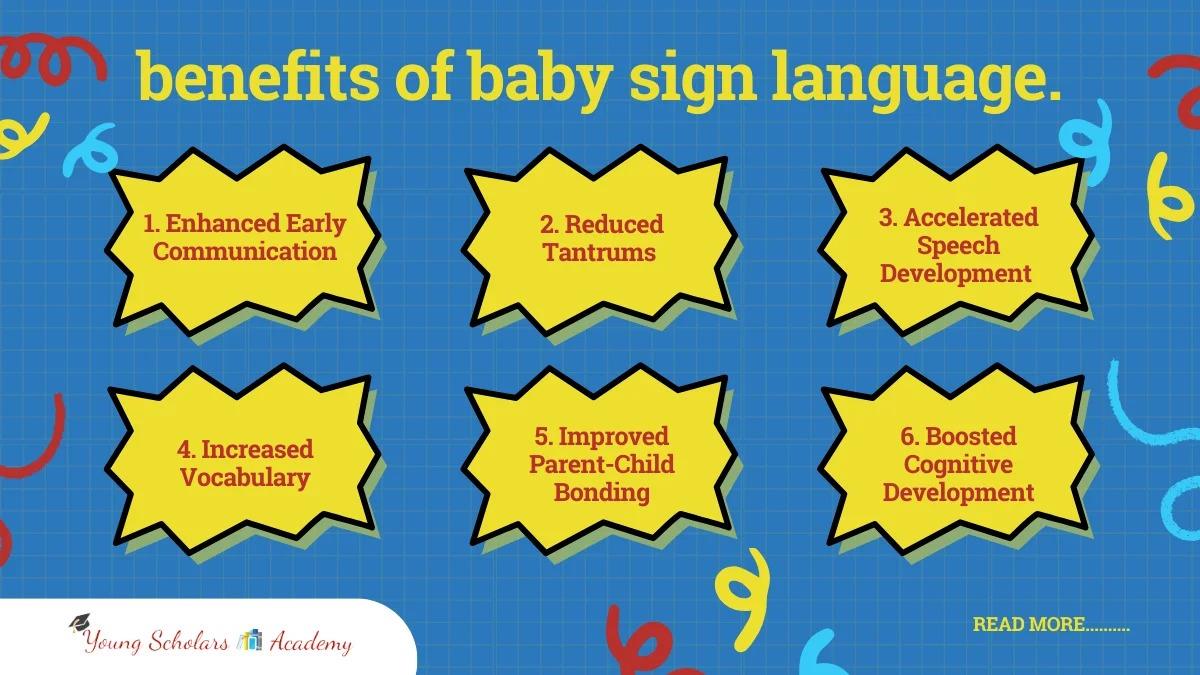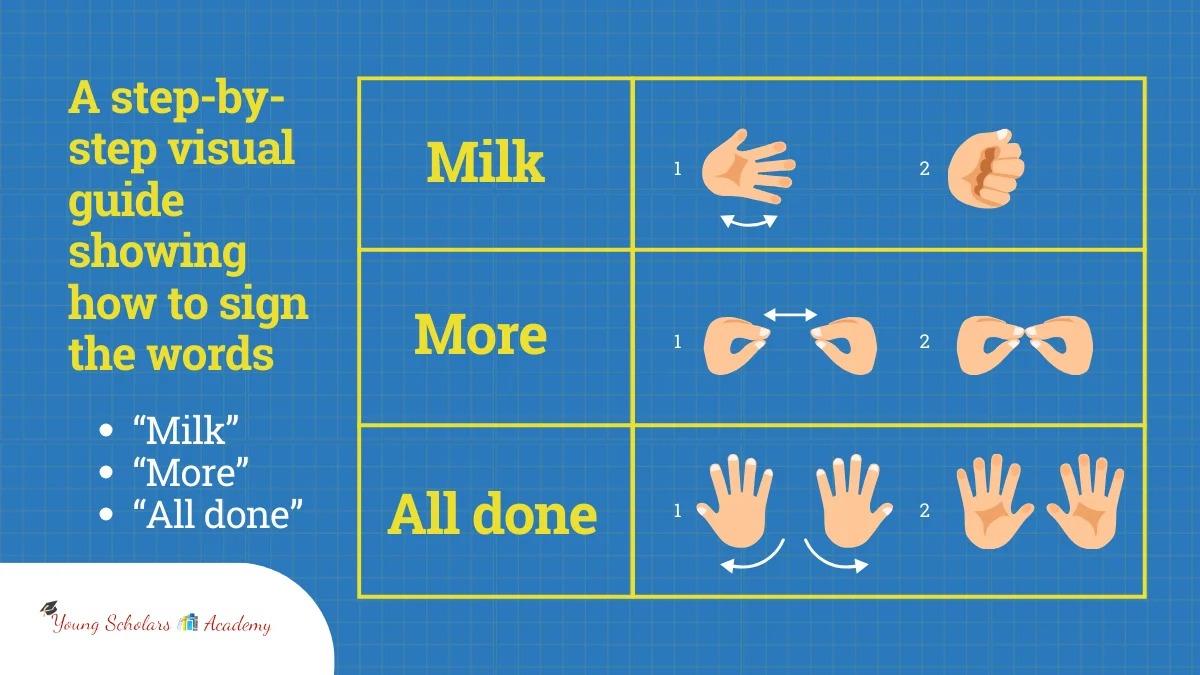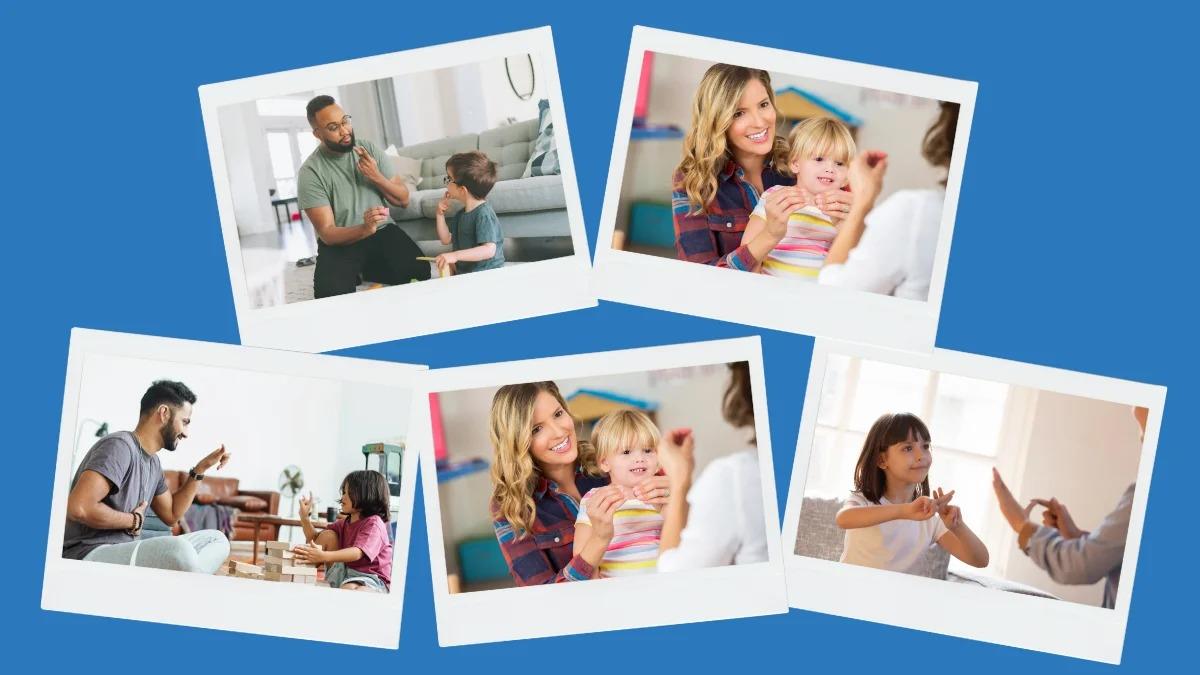As a parent, you want the best for your little one, especially when it comes to their development and education. If you’re exploring daycare options in Colorado, you’ve come across various programs and methodologies. But have you considered the incredible benefits of baby sign language? At Young Scholars Academy, we’ve made sign language a cornerstone of our infant care program, and the results are nothing short of amazing.
Why Sign Language for Babies?
Before we dive into the benefits, let’s clarify what we mean by baby sign language. It’s a simplified version of sign language that uses hand gestures to represent common words and concepts. Unlike adult sign language, it’s designed to be easy for babies to learn and use, even before they can speak.
At Young Scholars Academy, we’ve seen firsthand how sign language can transform the way infants communicate and learn. Our approach focuses on teaching basic self-help skills to help infants communicate their needs effectively. We start with simple signs like “Please,” “Thank you,” “All done,” and “More.” As children grow, we incorporate signs into our weekly themes, such as animal signs during our “Farm Animal” weeks.
25 incredible benefits of sign language for babies:

1. Enhanced Early Communication
Babies can express their needs and wants long before they can speak. This early form of communication bridges the gap between infancy and verbal language, allowing infants to convey their thoughts and needs. At Young Scholars Academy, we’ve seen babies as young as 6 months old successfully use signs to communicate, reducing frustration and strengthening bonds with caregivers.
2. Reduced Tantrums
When babies can effectively communicate their needs, they’re less likely to resort to crying or tantrums. Sign language gives them a tool to express themselves, leading to calmer, happier infants. Our caregivers report significantly fewer meltdowns in babies who use sign language, creating a more peaceful environment for everyone.
3. Accelerated Speech Development
Contrary to common misconceptions, sign language supports and enhances verbal language development. It lays a foundation for understanding language concepts, making the transition to spoken words smoother. Many parents in our program report that their signing babies start speaking earlier and with a more extensive vocabulary than their non-signing peers.
4. Increased Vocabulary
Children who learn sign language often develop larger spoken vocabularies as they grow. Signs provide a visual and kinesthetic anchor for words, making them easier to remember and use. In our toddler programs, we consistently see that children who started with baby signs have a more diverse and nuanced vocabulary.
5. Improved Parent-Child Bonding
Sharing a unique language creates special moments of connection between parent and child. The focused attention needed for signing fosters deeper engagement and understanding. Parents often tell us that learning and using signs together has become a cherished part of their daily routine, strengthening their bond with their child.
6. Boosted Cognitive Development
Sign language stimulates multiple areas of the brain, promoting overall cognitive growth. It engages visual, motor, and language centers simultaneously, creating rich neural connections. We’ve seen that babies in our sign language program often show advanced problem-solving skills and quicker learning in other areas of development.
7. Enhanced Memory Skills
Learning and using signs helps develop memory from an early age. The process of associating a gesture with a meaning exercises a baby’s recall abilities. Our educators have noted that children who use sign language often excel in memorization tasks and show strong information retention skills as they grow.
8. Improved Visual Perception
Babies become more attuned to visual cues and body language through sign language. This heightened visual awareness extends beyond signing, enhancing their overall ability to interpret and respond to their environment. We’ve seen this translate into better spatial awareness and more advanced puzzle-solving skills in our toddler programs.
9. Increased Attention Span
The focus needed to learn and use signs can improve overall attention span. Babies learn to concentrate on hand movements and facial expressions, developing their ability to sustain attention. Teachers in our preschool programs often comment on the superior focus and engagement of children who started with our baby sign language program.
10. Development of Fine Motor Skills
Making signs helps babies refine their hand movements and coordination. This early practice in purposeful hand motions contributes to improved dexterity and control. We’ve observed that babies who sign often reach fine motor milestones, like using utensils or drawing, earlier than their peers.
11. Enhanced Emotional Intelligence
Signs for emotions help babies recognize and express feelings earlier. This early emotional vocabulary allows for more nuanced communication of needs and experiences. Our caregivers report that signing babies are often more empathetic and better at managing their emotions, leading to smoother social interactions.
12. Multilingual Foundation
Early exposure to sign language can make it easier to learn additional languages later. It introduces the concept that ideas can be expressed in different ways, laying a cognitive foundation for multilingual thinking. Many of our alumni parents report that their children show an aptitude for foreign languages in later schooling.
13. Improved Future Reading Skills
The visual-manual nature of sign language supports later reading development. It helps children understand that symbols (whether gestures or letters) represent ideas, a crucial concept for literacy. Our follow-up studies show that children from our sign language program often become early and enthusiastic readers.
14. Increased Self-Esteem
Being able to communicate effectively boosts a child’s confidence. Successfully conveying their needs and being understood gives babies a sense of accomplishment and control. We see this confidence carry through in our preschool programs, where these children often take on leadership roles in group activities.
15. Better Understanding of Spatial Relationships
Many signs involve spatial concepts, enhancing this area of cognition. Children learn about ‘up’, ‘down’, ‘in’, ‘out’, etc., through physical movements, cementing these concepts. This spatial awareness translates to advanced skills in areas like mathematics and geography as children progress through our programs.
16. Enhanced Problem-Solving Skills
The ability to communicate needs leads to early problem-solving behaviors. Babies learn that they can influence their environment through communication, encouraging creative thinking. Our educators note that signing babies often shows more initiative in solving simple problems, like figuring out how to reach a toy.
17. Improved Social Skills
Sign language can ease earlier and more complex social interactions. Babies can engage with peers and adults more effectively, laying the groundwork for strong social skills. In our mixed-age settings, we often see signing babies confidently interacting with older children, fostering advanced social development.
18. Reduced Risk of Language Delays
Early communication through signs can help identify and address potential language issues. It provides a window into a child’s comprehension and expression abilities, allowing for early intervention if needed. Our partnership with speech therapists has shown that sign language can be a valuable tool in addressing and preventing language delays.
19. Increased Cultural Awareness
Exposure to sign language introduces the concept of diverse communication methods. It opens children’s minds to different ways of expressing ideas, fostering acceptance and curiosity about other cultures. This early exposure to diversity aligns with our broader curriculum goals of raising culturally aware and empathetic individuals.
20. Improved Spelling Abilities
The visual nature of signs can support letter and word recognition later. Children who learn to associate hand shapes with concepts often find it easier to connect letters with sounds and words. Our kindergarten readiness assessments consistently show strong pre-reading skills in children who participated in our baby sign language program.
21. Enhanced Creativity and Expression
Sign language offers another medium for creative expression. It encourages thinking outside the box and finding new ways to convey ideas. We incorporate sign language into our art and music programs, observing how it enhances children’s overall creative expression and storytelling abilities.
22. Strengthened Neural Connections
Using both signs and speech stimulates multiple areas of the brain simultaneously. This cross-modal communication strengthens neural pathways, potentially enhancing overall cognitive function. While long-term studies are ongoing, we’ve observed that children from our sign language program often show strong analytical and creative thinking skills.
23. Improved Understanding of Abstract Concepts
Some abstract ideas are easier to grasp through visual signs. Concepts like time, emotions, or quantities can be more tangible when represented by gestures. Our curriculum uses this by using signs to introduce complex ideas earlier, preparing children for advanced learning in later years.
24. Facilitation of Inclusion
Knowledge of sign language can help include hearing-impaired family or community members. It promotes empathy and understanding of different communication needs. We’ve had heartwarming feedback from families where signing has allowed babies to communicate with hearing-impaired relatives, fostering inclusive family dynamics.
25. Fun Family Activity
Learning signs together can be an enjoyable bonding experience for the whole family. It creates opportunities for playful interaction and shared learning. Many families in our program report that singing has become a fun part of their daily routine, with older siblings often enthusiastically joining in.
Getting Started with Baby Sign Language
Introducing sign language to your baby can be an exciting and rewarding experience. At Young Scholars Academy, we’ve helped countless families begin their sign language journey. Here’s our comprehensive guide to get you started:
When to Start
It’s never too early to start singing with your baby. While most babies begin to sign back between 8-12 months, you can start introducing signs as early as 4-6 months. Remember, consistency is key, and early exposure helps babies become familiar with signs even before they can use them.
Choosing Your First Signs
Start with signs that are most relevant to your baby’s daily life. Here are some suggestions:
- Milk
- Eat
- More
- All done
- Sleep
- Diaper
- Bath
- Mommy/Daddy
- Please
- Thank you
These signs cover basic needs and common activities, making them perfect starting points for communication.
Proper Signing Technique
When signing to your baby:
- Make eye contact to ensure their attention
- Say the word out loud while making the sign
- Use clear, consistent hand movements
- Repeat the sign often in relevant contexts
- Be patient and don’t force your baby to sign back
Integrating Signs into Daily Routines
Consistency is crucial for success. Here are some ways to incorporate signing into your daily life:
- Mealtime: Use signs for “eat,” “drink,” “more,” and specific foods
- Diaper changes: Sign “diaper” before and during changes
- Bedtime: Incorporate signs like “sleep,” “book,” and “love” into your bedtime routine
- Playtime: Use signs for toys, colors, and actions during play
Making It Fun
Learning should be enjoyable for both you and your baby. Try these ideas:
- Sing songs with accompanying signs
- Play sign language games like “Simon Says” with older siblings
- Read books that incorporate sign language
- Use signs while narrating your daily activities
Dealing with Challenges
It’s normal to face some hurdles when starting. Here are common challenges and how to address them:
- Inconsistency: Set reminders to use signs regularly
- Forgetting signs: Keep a chart of common signs visible in your home
- Baby not signing back: Be patient and keep signing; understanding often precedes expression
- Family skepticism: Share resources about the benefits of baby sign language
Tracking Progress
Keep a log of your baby’s signing journey:
- Note when you introduce new signs
- Record the date your baby first uses each sign
- Celebrate milestones and share progress with family
Expanding Your Sign Language Vocabulary
As your baby becomes comfortable with basic signs, gradually introduce more:
- Emotions: happy, sad, angry, scared
- Animals: dog, cat, bird, fish
- Colors: red, blue, yellow, green
- Family members: grandma, grandpa, sister, brother
- Action words: play, go, stop, help
Resources for Learning
To support your sign language journey:
- Attend parent-child sign language classes
- Use online resources and videos
- Read books about baby sign language
- Connect with other signing families for practice and support
At Young Scholars Academy, we’re here to support you every step of the way. Our experienced staff can provide guidance, answer questions, and help you make the most of your baby sign language experience.
Remember, every baby is unique, and they’ll learn at their own pace. The key is to be consistent, patient, and make singing a fun part of your daily interactions. Before you know it, you and your baby will be communicating in ways you never thought possible at such a young age!
The Young Scholars Academy Difference
At Young Scholars Academy, we’ve integrated sign language into our curriculum in a way that maximizes these benefits. Our experienced caregivers use signs consistently throughout the day, reinforcing learning in a natural, immersive environment.
Our approach isn’t about teaching signs; it’s about opening a world of communication and cognitive development for your child. We’ve observed significant improvements in cognitive recognition among children in our program, setting them up for success in their future learning endeavors.
Conclusion: A Foundation for Lifelong Learning
The benefits of baby sign language extend far beyond the infant years. By choosing a daycare program like Young Scholars Academy that incorporates sign language, you’re giving your child a head starts in communication, cognitive development, and social skills.
We invite you to learn more about our unique approach to infant care and how we use sign language to nurture your child’s growth and development. Visit Young Scholars Academy today and see the difference our program can make in your baby’s life.



Leave a Reply